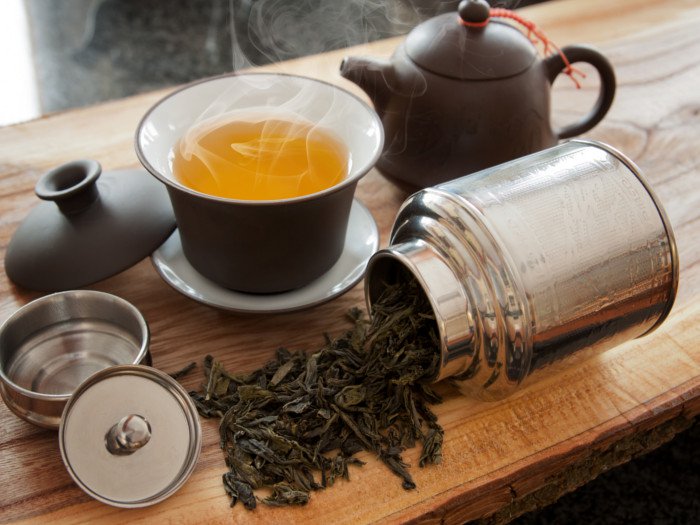5 Types of Tea
Although coffee lovers may disagree, tea is the most popular drink with over 3,000 varieties in the world after water. This article will talk about 5 mainly tea type and their benefits and drawbacks.
First of all, it’s important to note that true “tea” all comes from the same plant; the Camellia sinensis. The classification of this tea depends on how the plant’s tea leaves are prepared and processed.
There are five true teas;
Black tea
Green tea
Oolong tea
Pu-erh tea
White tea
1 Black tea is a rich source of various polyphenols including flavanols, flavonols, and phenolic acids. Research shows that tea polyphenols help prevent increases in oxidized DNA from carcinogen exposure. Additionally, these polyphenols appear to increase blood-antioxidant levels and lower the risk of chronic disease. Although most people immediately think of coffee as a caffeine-enriched performance booster, black tea has a similar effect. Another benefit of black tea is that it has anti-bacterial properties. These properties mean that, in some instances, black tea may kill or slow the growth of certain types of bacteria. Black tea also has anti-cariogenic actions (prevents cavities) and suppresses the growth of certain oral bacteria. In observational population studies, higher black tea intake reduces the risk of stroke. About the drawbacks of black tea, we also found some. Since black tea contains a moderate amount of caffeine, it can cause issues for anyone who suffers from caffeine-related problems, including anxiety, jitters, restlessness, stomach discomfort, and sleep problems. It may impact iron absorption.
2 Green tea originated in China where it has been popular for millennia. While black tea is the popular choice in the Western world, green tea dominates the East, especially in Japan. Green tea is very healthy, and it is one of the most research-backed foods/drinks in the world. Specifically, systematic reviews demonstrate that regular green tea consumption can reduce cancer risk, reduce blood pressure, reduce insulin resistance, and increase glycemic control. Much of these beneficial properties come from the catechin content of green tea, which is a type of polyphenol. Just one thing; watch out for the sugary latte versions of the drink in popular cafes. These should not be considered as healthy, and they usually contain 10+ teaspoons of sugar.
3 Oolong is another of the “true” teas; it comes from the leaves of the Camellia Sinensis plant. But just what is it and how does it compare to green and black teas? Firstly, oolong is a partially oxidized tea – it undergoes part of the same process as black teas. Depending on the degree of leaf oxidation, it may taste closer to a green or black tea. Oolong has a mixture of the benefits that green and black teas provide, and it contains a range of polyphenols found in both. Human randomized trials and systematic reviews demonstrate that oolong can lower blood-glucose levels and improve the cholesterol profile.
4 Pu-erh tea is a fermented drink. Similar to red wine or kombucha, Pu-erh contains lots of live (beneficial) bacteria. This is due to the production process; the processing of the leaves allows for microbial fermentation. As a result, the tea continues to age and change even after drying the tea leaves. Pu-erh is a Chinese drink and it has the local name of ‘heicha’. Generally speaking, the taste is more bitter than standard tea, although it does become milder over time. Traditionally, green Pu-erh tea is the preferred choice and it has been around for centuries. However, making Pu-erh from black tea has become popular over the last few decades. Pu-erh has an equivalent caffeine content to whatever type of tea it is made from. Randomized controlled trials demonstrate that Pu-erh tea can improve health markers in patients with metabolic syndrome.
5 White tea is the mildest compared to black tea. It may also be a good option for those with caffeine sensitivities since it only contains around 25% as much caffeine as coffee. White tea comes from the camellia sinensis plant and it uses the freshest leaves available. Firstly, tea leaves are picked at a younger age when making white tea. Second, they don’t undergo processing such as rolling or oxidation, which leaves them with a mild and light taste. Despite these differences, the nutritional profile and polyphenolic content of both green and white tea are similar.
Reference:
<https://www.teasource.com/pages/types-of-tea>
<https://www.nutritionadvance.com/black-tea-health-benefits/>
<https://www.nutritionadvance.com/healthy-foods/types-of-tea/>
Search
Categories
Popular Posts



















Comments: 0
No comments